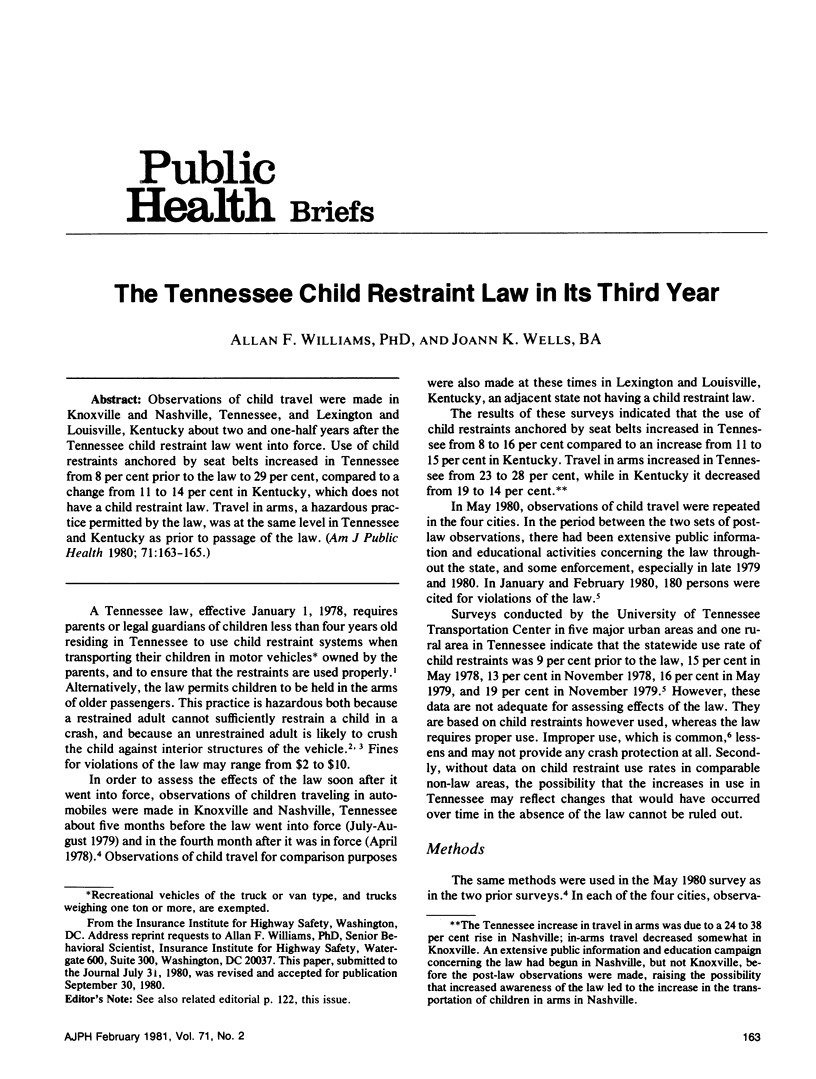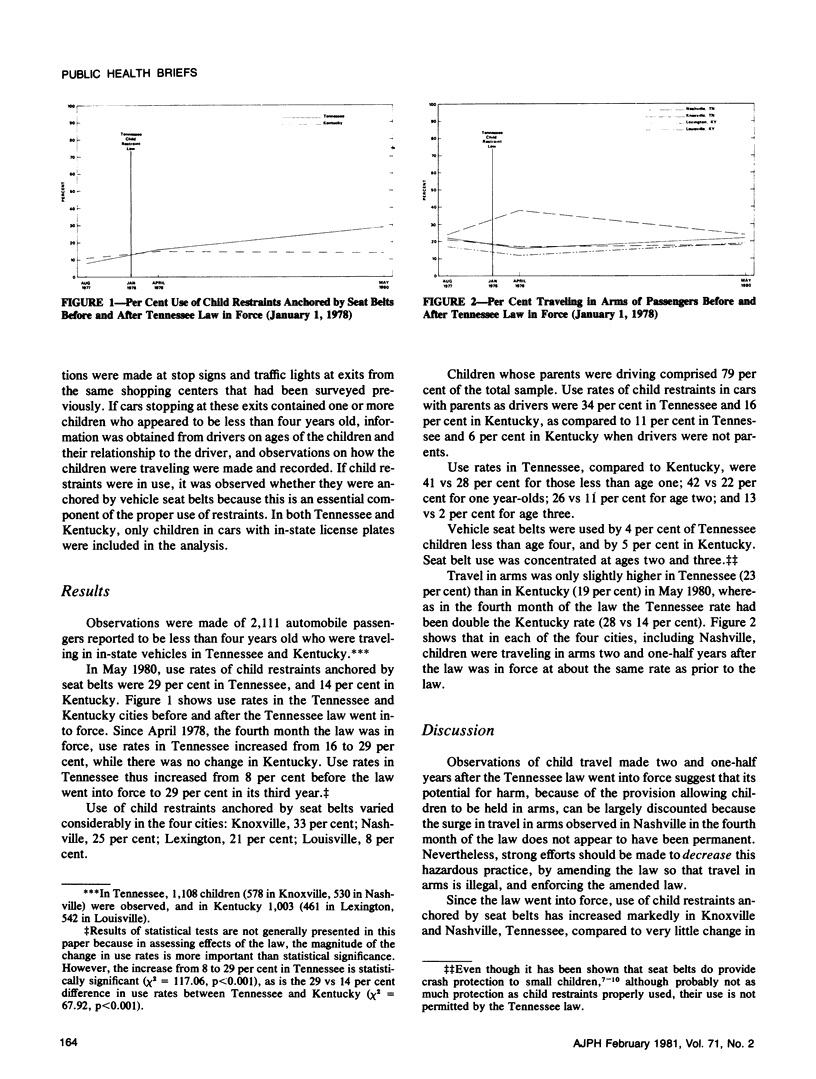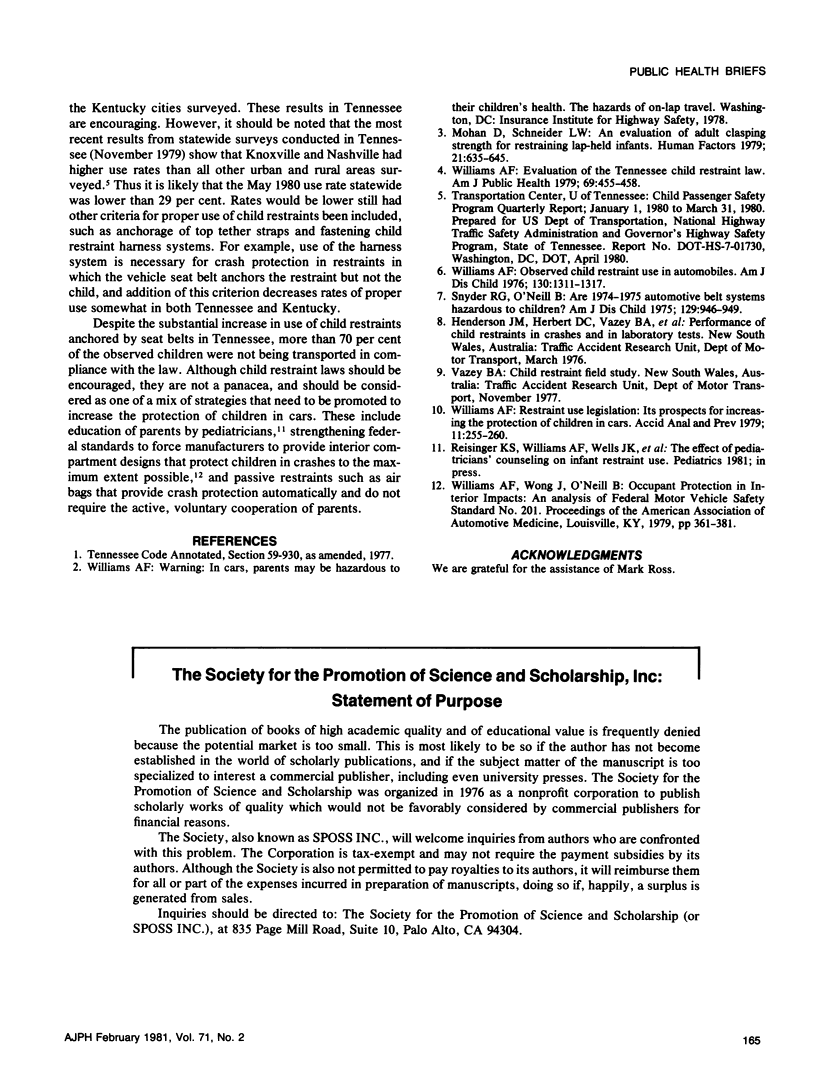Abstract
Observations of child travel were made in Knoxville and Nashville, Tennessee, and Lexington and Louisville, Kentucky about two and one-half years after the Tennessee child restraint law went into force. Use of child restraints anchored by seat belts increased in Tennessee from 8 per cent prior to the law to 29 per cent, compared to a change from 11 to 14 per cent in Kentucky, which does not have a child restraint law. Travel in arms, a hazardous practice permitted by the law, was at the same level in Tennessee and Kentucky as prior to passage of the law.
Full text
PDF


Selected References
These references are in PubMed. This may not be the complete list of references from this article.
- Mohan D., Schneider L. W. An evaluation of adult clasping strength for restraining lap-held infants. Hum Factors. 1979 Dec;21(6):635–645. doi: 10.1177/001872087912210601. [DOI] [PubMed] [Google Scholar]
- Snyder R. G., O'Neill B. Are 1974-1975 automotive belt systems hazardous to children? Am J Dis Child. 1975 Aug;129(8):946–949. doi: 10.1001/archpedi.1975.02120450052010. [DOI] [PubMed] [Google Scholar]
- Williams A. F. Evaluation of the Tennessee Child Restraint Law. Am J Public Health. 1979 May;69(5):455–458. doi: 10.2105/ajph.69.5.455. [DOI] [PMC free article] [PubMed] [Google Scholar]
- Williams A. F. Observed child restraint use in automobiles. Am J Dis Child. 1976 Dec;130(12):1311–1317. doi: 10.1001/archpedi.1976.02120130017003. [DOI] [PubMed] [Google Scholar]


